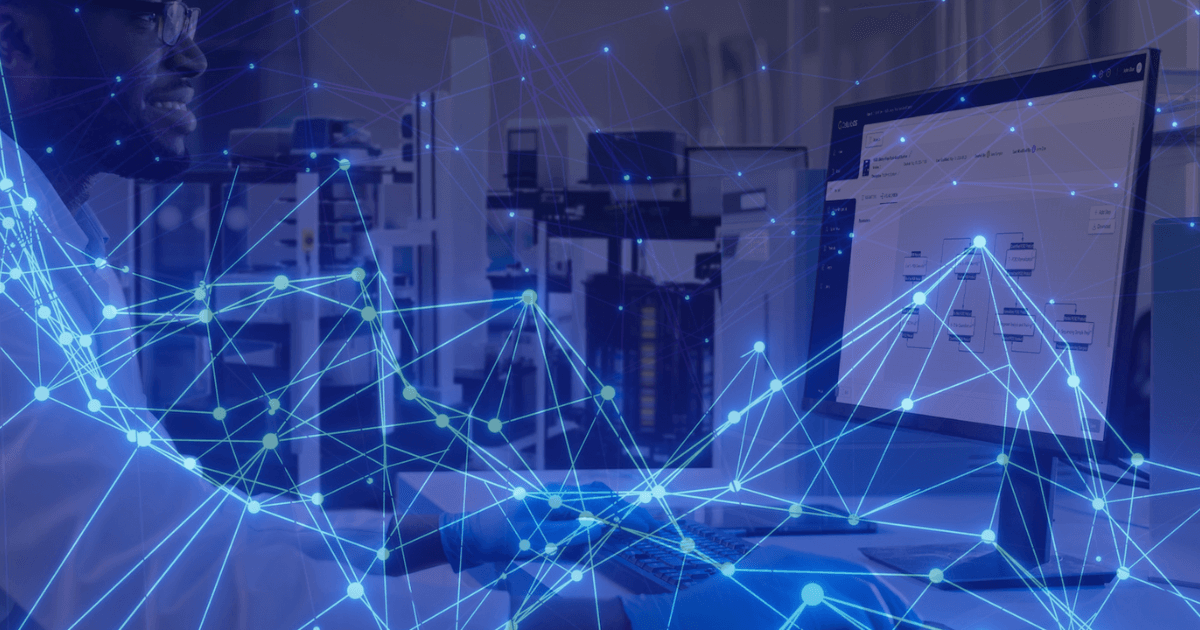
Walk into almost any life science laboratory today, and you’ll see a blend of instrumentation, talented scientists, and software tools working side by side. But look closer, and you’ll notice something missing: laboratory orchestration.
Despite decades of innovation and investment in instrumentation and software, many labs still run like disconnected islands. Automation is often limited to isolated workcells. Instruments are scheduled manually or controlled by standalone software. Data moves between systems through spreadsheets or USB sticks. Scientists and operations teams spend as much time collaborating to organize protocol execution and managing the lab as they do advancing science.
This is the status quo:
- Fragmented workflows
- Isolated automation
- Limited interoperability
- Inefficient resource utilization
What’s Holding Labs Back?
The root of the problem isn’t the technology. The problem is a lack of an enterprise framework for orchestrating protocol execution and data flow.
Many labs have invested heavily in automated devices, robotics, and digital tools, but these systems rarely talk to each other effectively. Workflow optimization is often constrained by proprietary software, incompatible protocols, and a lack of real-time coordination across equipment, schedules, and teams.
Without orchestration, labs face:
- Underused or bottlenecked equipment
- Downtime due to manual interventions
- Errors from misaligned workflows or handoffs
- Difficulty scaling operations or adding new capabilities
- Challenges capturing, normalizing, sharing, and archiving data
Labs know they need to break these silos to reach the next level of productivity, but most existing software solutions were not designed to manage the entire lab but parts of it. Ultimately, HighRes believes that a true lab orchestration solution functions at the organizational level.
Defining the Lab of the Future
At HighRes, we’ve spent over 20 years helping pharmaceutical companies, biotech innovators, and synthetic biology pioneers push the boundaries of lab automation. Along the way, we’ve developed a vision of what the lab of the future should look like:
- Fully orchestrated: Every device, workflow, and schedule connected under a unified platform.
- Modular and flexible: Labs can evolve as science demands, adding or reconfiguring workflows without major disruptions.
- Data-driven: Operational and experimental data are continuously captured, contextualized, and fed back into improving processes.
- Autonomous and scalable: Labs can run 24/7, dynamically adjusting to priorities, resources, and changing scientific needs.
To achieve this vision, we realized we needed to go beyond the traditional notion of lab automation software. We needed to build an operating system for life science organizations.
CellarioOS: The Operating System for the Modern Lab
CellarioOS is the result of this ambition:
A next-generation orchestration system designed to deliver on the promise of the lab of the future.
Where other software stops at controlling instruments, managing individual workflows, tracking sample IDs, or managing data, CellarioOS provides a lab-wide, real-time orchestration layer. It’s like an operating system for your lab, integrating hardware, software, workflows, and people into a cohesive, intelligent system.
Here’s how CellarioOS transforms lab productivity:
- Connect Everything: Integrates with a wide range of devices, robotics, informatics systems, and third-party tools making the lab interoperable and flexible.
- Optimize End-to-end Workflows: Manages end-to-end processes across multiple instruments and stations, dynamically allocating resources to keep work moving smoothly.
- Maximize Uptime: Schedules and prioritizes jobs in real time, minimizing idle time and bottlenecks, even in complex multi-step workflows.
- Drive Insights: Continuously monitors operations, capturing rich data that can inform process improvements, capacity planning, and scientific decisions.
- Enable Scalability: Supports labs of all sizes, from a single automated workstation to a fully integrated, multi-lab operation.
Delivering on the Promise
With CellarioOS, HighRes is helping labs shift from reactive, manual management to proactive, intelligent orchestration. Our customers have seen:
- Empowered scientists with the ability to visualize and use the full range of scientific capability at their organization
- Higher throughput without adding more instruments
- Safer processes with reduced cases of rework and fewer lost samples
- Streamlined access to automatically normalized and archived data
- Greater flexibility to adapt to new assays or projects
- Better utilization of personnel and equipment
With continued pressure limiting budget and a greater sense of urgency to deliver results faster, CellarioOS provides next generation productivity for the modern lab.
Ready for the Future?
The life sciences are moving fast, and labs can’t afford to be slowed down by fragmented systems or manual workarounds. HighRes is proud to be defining the future of lab orchestration, helping our customers unlock the full potential of their automation investments.
If you’re ready to move beyond the status quo, we’d love to learn more about your science and your future needs and to show you how CellarioOS can transform your lab into a truly orchestrated, high-performing operation.
Contact us today to learn more or schedule a demo.
